Nikon Nikkor AF-S 50 mm f/1.8G
3. Build quality
In the photo below the tested lens is positioned between its predecessor and the Sigma 1.4/30, designed for smaller sensors.
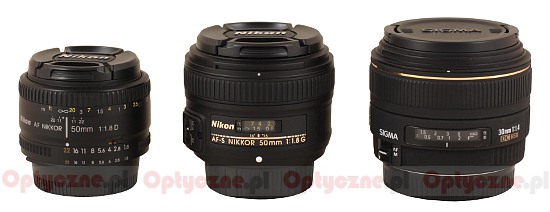 |
Please Support UsIf you enjoy our reviews and articles, and you want us to continue our work please, support our website by donating through PayPal. The funds are going to be used for paying our editorial team, renting servers, and equipping our testing studio; only that way we will be able to continue providing you interesting content for free. |
- - - - - - - - - - - - - - - - - - - - - - - - - - - - - - - - - - - - - - - - - - - - - - - -
The lens starts with a metal bayonet mount with contacts, inside which there is a rear element 26 mm in diameter. The element is on the same level as the mount when the focus is set at infinity. When we pass to the minimum focus the element hides inside the barrel by less than 1 cm. By doing so it moves the whole element system which means the lens doesn’t change its focal length.
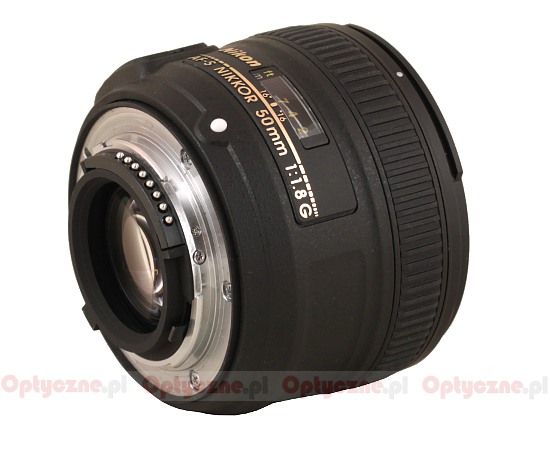 |
On the black casing, right behind the mount, you can easily notice a big white dot. Then you see a plate with the name and parameters of the lens, inside which you can find a window with a distance scale expressed in feet and metres. Below you get small depth of field markings by f/16. A bit on the left side of the plate and the distance scale there is a focusing mechanism mode switch (M/A - M).
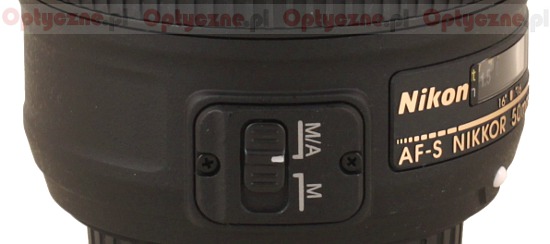 |
The further part of the lens consists of a manual focus ring, about 1 cm wide. It is covered by ribbed, rubber padding which task is to ensure better grip and more comfortable work. The ring moves smoothly and is well-damped. Running through the whole scale needs a turn through 130 degrees, which, for this class of lens and for those parameters, is a good result, allowing you to set focus precisely. It’s a pity that a scale slack, sometimes met in cheaper Nikkors, makes it a bit more tricky. Only the second or a bigger move can produce a visible effect.
The lens ends with a hood thread which, on the inside, has a non-rotating filter thread, 58 mm in diameter.
Looking at the front from the inside of the filter thread you can see the name and the parameters of the lens and the front element with a diameter of 28 mm which is hidden quite deeply inside the casing (about 2.5 cm deep when the focus is set at infinity).
When it comes to the optical construction we deal here with 7 elements positioned in 6 groups. One of them is aspherical. It is one element more than in the AF 50 MM F/1.8D model, which didn’t feature any aspherical elements either. Inside you can also find an aperture with seven diaphragm blades which can be closed down to f/16.
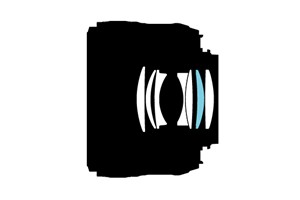 |
The Nikkor AF-S 50 mm f/1.8 G is sold with a hood (HB-47) and a soft pouch (CL-1013).
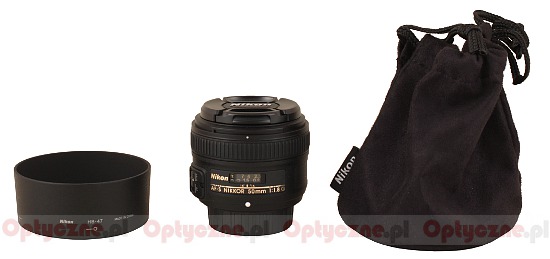 |






